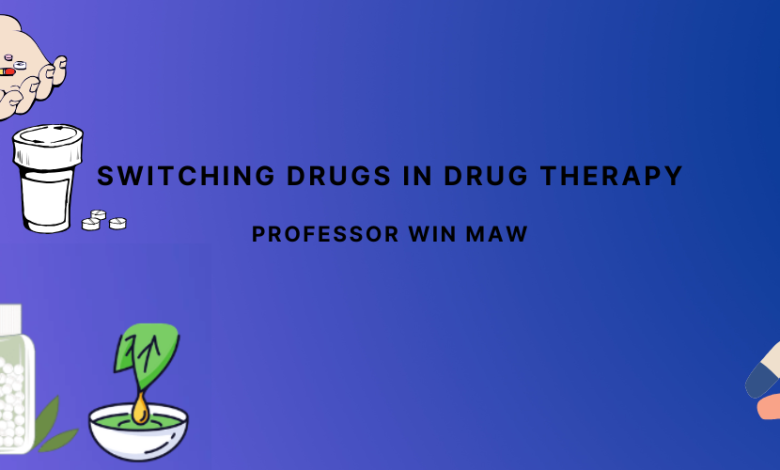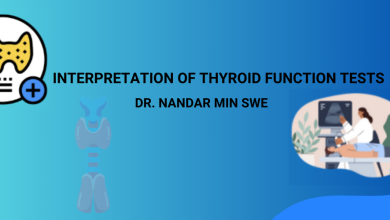Switching Drugs In Drug Therapy

In general, a disease implies an abnormality in the structure or function of the body’s tissues, organs or biological systems. Drug therapy is aimed at correcting the abnormality caused by the disease, including pain, infection, loss or over-activity of function etc. to become as close to normal as possible. According to the principles of Rational Prescribing Practice, there are three main objectives of Drug Therapy, namely: (a) curative or cure of the disease if it is curable, (b) palliative or relief of suffering if the disease is not curable, e.g. osteoarthritis, diabetes, hypertension; or before a cure is achieved, e.g. infections, and (c) prophylactic, to prevent the complications of the disease, or untoward effects of the drugs themselves. To achieve the specific objective(s) the action of the prescribed drug must be in accord with the pathology of the disease, and the dosage regimen, i.e. dose size, dosage interval and duration of therapy must be appropriate.
In practice, prescribers usually opt for drugs of “first choice”, reputedly the most effective ones. Accordingly, in a large majority of cases, drug therapy is successful when prescribed rationally. However, there are also cases when drug therapy is unsatisfactory. When this occurs, one option is to switch the drug, from the one prescribed to a more appropriate alternative.
Before doing so, the prescriber must make really sure of the situation. For this, the prescriber must know when the onset of optimal drug effect would occur. For example, the onset of discernable effect of antibiotics occurs in 36 to 48 hours; that of milder anti-hypertensive agents (sympatholytics) in 7 to 10 days.
The following are some reasons (or considerations) which would warrant (or justify) switching of medications, or otherwise, in the course of drug therapy.
Pharmacodynamics
This refers to what the drug does to its targets. It includes the mechanism of action (MOA), types of action and effect, magnitude and duration of action/clinical effects. These may be therapeutic or untoward (including adverse) in nature. From the pharmacodynamic aspect, the need to switch drugs could be due to:
(a) Initial misdiagnosis.
Many signs and symptoms are common to many diseases, e.g. fever, pain, inflammation, GI disturbances etc. Chest infection causing fever, cough and chest pain can be caused by different types of bacteria, or viruses. So the initial diagnosis of a case could be incorrect when based on clinical features alone. Sensitivity to different anti-infective agents by different bacteria is variable, by virtue of genetic nature or acquired resistance. Presence of drug resistance, innate or acquired, would lead to unsatisfactory outcome of infection treatment. This necessitates switching of anti-infective agent to an appropriate one, especially based on Culture & Sensitivity test if available.
(b) Inadequate potency.
Potency of a drug is the maximum therapeutic effect it can produce with optimal dose. Therapeutic effect will not increase by increasing the dose beyond this, but toxicity would. For example, paracetamol is effective only for mild to moderate pain; beta blockers, calcium channel blockers, ACE inhibitors and angiotensin receptor blockers (ARB) would lower the blood pressure by about 10 – 20 mmHg only. Hence if the condition is severe enough, less potent drug should be switched to more potent ones, e.g. from paracetamol to naproxen, diclofenac etc. in case of severe pain and inflammation such as acute gout, osteoarthritis, fracture.
(c) Untoward effects.
Any drug effect that is not therapeutic in nature (as per objectives) can be considered as an untoward effect. Some untoward effects are overtly or potentially harmful to the patient, or are intolerable, in which case they are called adverse reactions, which also include allergy. Intolerance may be peculiar to individual patients due to idiosyncrasy, or due to coexisting disease such as peptic ulceration, diabetes, hypertension, epilepsy etc. In any case, when there are adverse reactions to a drug which may have been prescribed, probably inadvertently, it should be switched to another more appropriate alternative.
Pharmacokinetics
Pharmacokinetics deals with what the body (host) does to the administered drug. It involves absorption from the administered site, distribution to various sites in the body, and eventual elimination of the drug from the body resulting in termination of drug activity. If the pharmacokinetic aspects of the drug to be prescribed are carefully and wisely considered and the drug is prescribed accordingly, switching of drugs on pharmacokinetic basis would not be warranted. The following are some aspects of drug pharmacokinetics to be taken into consideration when prescribing:
(a) Absorption.
Barring intravascular (intravenous) administration, a drug administered systemically has to be absorbed from the site of administration to reach the systemic circulation. This process requires the passage of drug molecules across the cell membranes. While drugs given intramuscularly or subcutaneously are almost completely absorbed, a wide variability exists for absorption from the GI tract in case of drugs given by oral ingestion. Gastric epithelium being not properly equipped for absorption, most drugs given orally, just like most foods, are absorbed from the small intestines. To hasten absorption – hence onset of action – the ingested drug must be made to reach the small intestines more quickly, such as by taking a relatively large volume of fluids that would distend the gastric antrum and open up the pylorus.
Based on their chemical structure or formulation, absorption of drug from the intestines varies widely, from zero (e.g. aminoglycoside antibiotics) to nearly 100% when absorbed by an active process. Poorly absorbed drugs are not suitable for systemic administration, but appropriate when the target is inside the intestinal lumen, e.g. gastroenteritis, PU, gut sterilization. Other factors influencing intestinal drug absorption include: GI diseases, and interactions between drugs or between drug and food.
A drug absorbed from the gut first passes through the hepatic portal system where it is subjected to possible biotransformation by the liver drug metabolizing enzymes – called “first pass hepatic extraction”, and only the fraction that escapes this process reaches the systemic circulation. Activity of the liver enzymes can be decreased by liver diseases whereby more of the drug escapes into the systemic circulation.
(b) Distribution.
Once in the blood stream, a fraction of the absorbed drug may become reversibly bound to plasma proteins, and the remainder stays as the “free” or unbound form.
For a drug to produce its effects it has to reach its site(s) of action in a sufficient concentration. The amount of drug at the site determines its magnitude of action. If the site of action is extravascular the drug must escape the vascular compartment to produce its actions; and only the free or unbound form can do so. However, as the free form escapes the blood stream it is replenished by some of the bound form being set free, to maintain the fraction of free form in the blood stream. A highly protein bound drug thus have a long duration of action, e.g. sulfamethoxypyridiazine.
If the intended site of action is in the CNS, the drug must be able to cross the “blood brain barrier” (BBB). To illustrate, penicillins and cephalosporins poorly cross the BBB and are not suitable for infections in the CNS; atenolol (beta blocker), loratidine (antihistamine) poorly cross the BBB and have less CNS side-effects.
(c) Elimination
This is a process by which the active drug is eliminated from the body resulting in termination of drug activity. A drug may be eliminated by biotransformation (metabolism) whereby the chemical structure of the drug molecule is altered so that it becomes inactive. However, the biotransformed metabolites of some drugs remain as active as, or even more active than the parent drug; in which case the drug produces a long duration of action, e.g. diazepam. Another outcome of biotransformation is to render the drug molecules to be more readily excreted.
Excretion or physical removal of the drug from the body is another mode of elimination. Kidneys are the main organs of excretion for most drugs. Liver is another significant organ of excretion (in the bile) for some drugs, but drugs excreted via the bile may be reabsorbed to some extent by “entero-hepatic circle” whereby the drug’s duration of action is prolonged, e.g. oral contraceptives.
Since abnormalities of the liver and/or kidneys can affect drug elimination – hence the magnitude and duration of drug action – the functions of these organs must be taken into consideration when prescribing drugs. Abnormalities of these organs may be caused by diseases, drugs or extremes of age.
From the above, the importance of considering the drug pharmacokinetics can be appreciated. Pharmacokinetics of drugs can affect the onset, magnitude, and duration of drugs’ action. As stated above, careful and wise consideration of drug kinetics may obviate the need for switching drugs, on pharmacokinetic grounds, during drug therapy.
Dr Win Maw
MBBS, MMedSc (Rgn), PhD (London),
PhD (Hon)(Ygn), Professor & Head (Retd)
Department of Pharmacology,University of Medicine (1), Yangon




